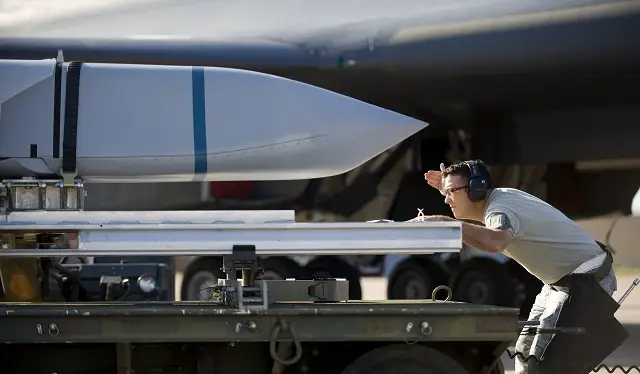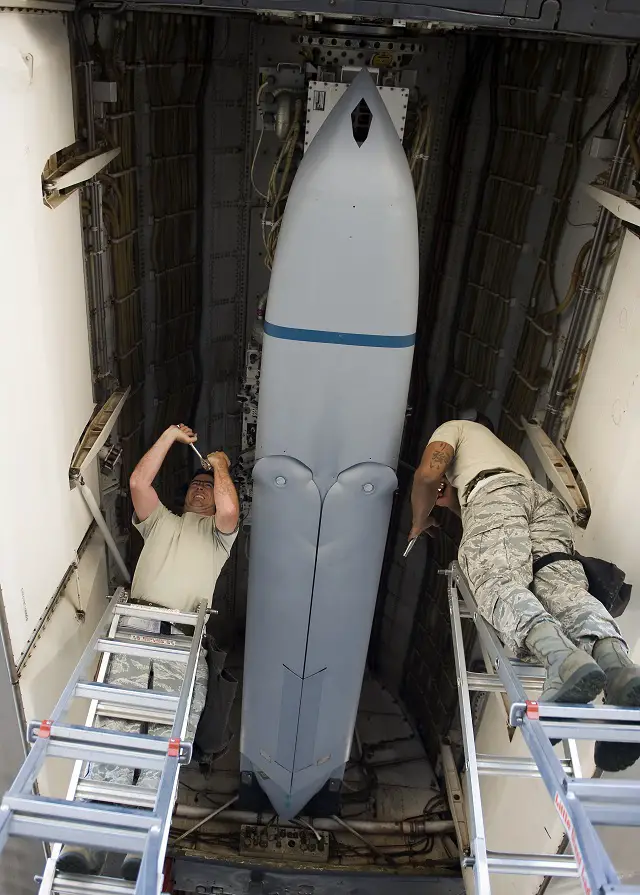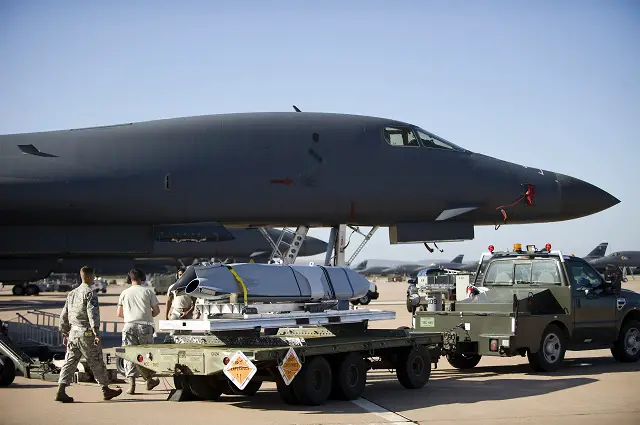 U.S. Air Force Master Sgt. Troy Drasher, 7th Maintenance Group, inspects a Long Range Anti-Ship Missile (LRASM) prior to being loaded onto a B-1 Bomber June 12, 2013, at Dyess Air Force Base, Texas. The LRASM is based on the Joint Air to Surface Standoff Missile Extended Range, but incorporates a multi-mode radio frequency sensor, a new weapon datalink and altimeter and an uprated power system. However, it has a reduced range than the JASSM-ER, similar to that of the original JASSM. (U.S. Air Force photo by Airman 1st Class Damon Kasberg/Released) |
|||
However,
while the LRASM does utilize the airframe of the JASSM-ER, it incorporates
additional sensors and systems to achieve a stealthy and survivable subsonic
cruise missile as well as a weapon data link and an enhanced digital anti-jam
GPS to detect and destroy specific targets within a group of ships. "One of the biggest improvements of this weapon is its ability to receive target or coordinate updates in-flight," Garner said. "Unlike the JASSMs 'fire and forget' mentality, this new technology gives you the chance to 'fire and change your mind.' Because of the standoff feature these weapons possess, they tend to be in-flight for some time. For us to be able to change its coordinates on the fly provides us with a large range of flexibility." The overarching concept behind the B-1's rise in the maritime environment can be attributed to the Department of Defense's much discussed Air-Sea Battle concept, in which long range bombers serve as a key tenet. ASB is designed to guide the four branches of the armed forces as they work together to maintain a continued U.S. advantage against the global proliferation of advanced military technologies and anti-access/area denial capabilities. Furthermore, should the LRASM technology be fielded into a variant of the JASSM-ER, the B-1 presents itself as a premier platform to carry the weapon, as it is currently capable of carrying 24 of the long range missiles, tops across all Air Force platforms. The 337th TES is scheduled to complete its first live-fire test of the missile in the coming months. by Senior Airman Charles V. Rivezzo 7th Bomb Wing Public Affairs |
|||
 U.S. Air Force Master Sgt. Troy Drasher (left) and Tech. Sgt. Alfred Agee both from the 7th Maintenance Group load a Long Range Anti-Ship Missile (LRASM) into the bomb bay of a B-1 Bomber June 12, 2013, at Dyess Air Force Base, Texas. Unlike current anti-ship missiles the LRASM will be capable of conducting autonomous targeting, relying on on-board targeting systems to independently acquire the target without the presence of prior, precision intelligence, or supporting services like Global Positioning Satellite navigation and data-links. These capabilities will enable positive target identification, precision engagement of moving ships and establishing of initial target cueing in extremely hostile environment. (U.S. Air Force photo by Airman 1st Class Damon Kasberg/Released) |
|||
USAF B-1 test squadron demonstrates Long Range Anti-Ship Missile (LRASM)
- Posted On




